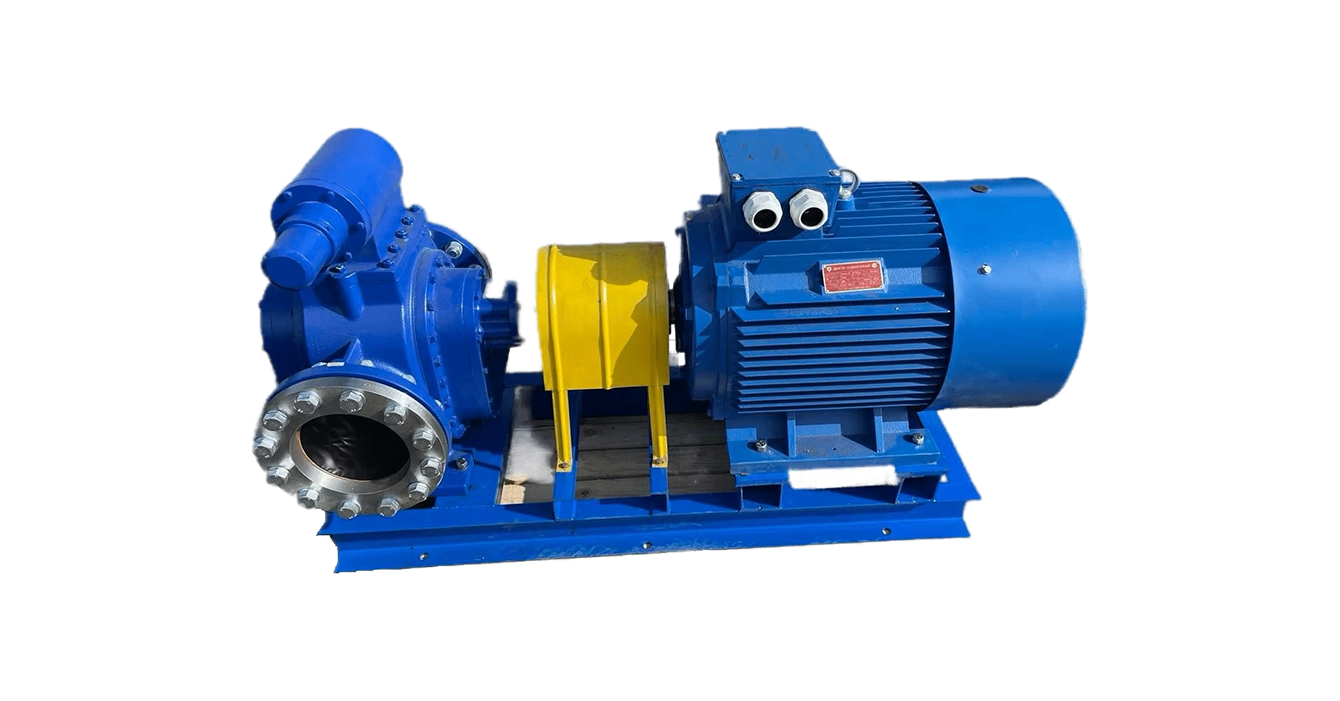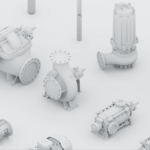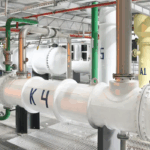The main element of a gear pump is two gears that rotate in a housing. One of the gears is connected to the drive, and the other is synchronized with it. When the gears rotate, they create sealed chambers into which the liquid enters at the pump inlet and moves along the inner walls of the casing to the outlet.
Key features of the work:
- No pulsations: The liquid flow is uniform, allowing the pump to be used for precise dispensing.
- High pressure: Gear pumps are capable of generating significant operating pressures, which allows for the transportation of viscous and dense media.
Types of gear pumps
- External gear pumps: Both gears are located in the casing, and the liquid moves in the gaps between the teeth and the pump walls.
- They are used to work with viscous liquids such as greases, oils, paints.
- Internal gear pumps: One gear is located inside the other. They ensure quieter operation and compactness.
- Suitable for medium viscosity liquids, such as syrups or liquid food products.
- Pumps with leakage compensation: They have additional seals that allow them to work with abrasive media or at high temperatures.
Areas of application
- Food industry: Pumping syrups, chocolate mass, vegetable and animal fats.
- Oil and gas industry: Transportation of oils, fuel oil, bitumen, and diesel fuel.
- Chemical industry: Working with paints, resins, varnishes, and adhesives.
- Cosmetics industry: Transportation of creams, gels, lotions, and other thick products.
- Metallurgy and mechanical engineering: Use in machine tool lubrication and cooling systems.
Features of gear pumps
- High performance and efficiency: They provide transportation of liquids with a viscosity of up to 1,000,000 mPa-s.
- Resistance to high temperatures: Many models are capable of handling liquids at temperatures up to 200°C thanks to special body materials and seals.
- Possibility of reverse flow: Some models allow you to change the direction of fluid flow without the need to change the system design.
- Compactness: The simple design ensures that the pump is small enough to be integrated even in confined spaces.
- Durability: The use of high-strength materials such as stainless steel, bronze or cast iron ensures a long service life even when working with aggressive environments.
How to choose a gear pump?
- Fluid characteristics: Consider viscosity, temperature, chemical composition, and the presence of abrasive particles.
- Body and gear material: Choose materials that are appropriate for the operating conditions (stainless steel for aggressive environments, cast iron for technical fluids).
- Productivity: Calculate the required pumping volume and operating pressure.
- Temperature: Ensure that the pump is capable of handling liquids in the desired temperature range.
- Sealing system: Select the type of seal suitable for the process medium (e.g. mechanical seals for chemical fluids).

























































